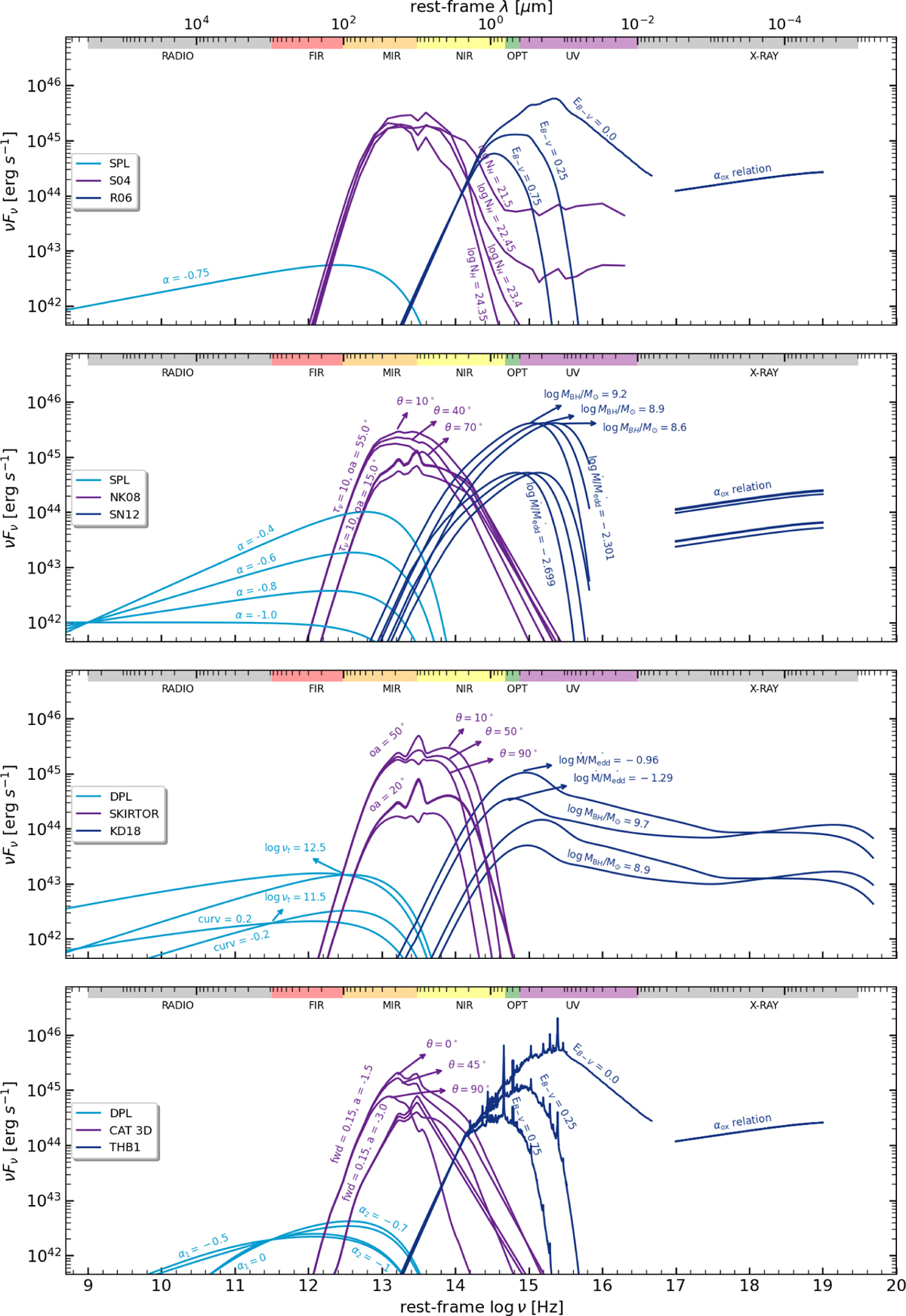Fig. 2

Download original image
Examples of the model templates included in AGNFITTER-RX for three distinct physical components of the nuclear emission (AGN) in active galaxies. At radio frequencies, the nuclear SED is dominated by the synchrotron emission (light blue curves) associated with jets and core emission at ~10−1−106 parsec scales. The MIR emission is dominated by the hot dusty “torus” emission (purple curves) arising at ~10 pc scales. The optical-UV-X-ray emission is dominated by the accretion disk and X-ray corona emission (dark blue curves) at ~10−2 pc scales. The first panel shows a SPL in radio, a subsample of torus templates by Silva et al. (2004) with different column densities, and the accretion disk model by Richards et al. (2006) with an increasing reddening parameter. The second panel presents SPL emission with different slopes, torus models by Nenkova et al. (2008) for different inclination angles and opening angles, and optical depth of 10, and accretion disk models by Slone & Netzer (2012) for diverse black holes masses and accretion rates. The third panel shows a DPL with curv and log νt as free parameters; torus templates by Stalevski et al. (2016) with optical depth of 3 and diverse inclination and opening angles; and accretion disk models by Kubota & Done (2018) defined by black holes masses and accretion rates. The fourth panel shows a DPL with log νt = 11.5 Hz and different values of α1 and α2; torus model by Hönig & Kishimoto (2017) depending on inclination angles, index of cloud distribution and cloud fractions; and the accretion disk template by Temple et al. (2021b).
Current usage metrics show cumulative count of Article Views (full-text article views including HTML views, PDF and ePub downloads, according to the available data) and Abstracts Views on Vision4Press platform.
Data correspond to usage on the plateform after 2015. The current usage metrics is available 48-96 hours after online publication and is updated daily on week days.
Initial download of the metrics may take a while.


